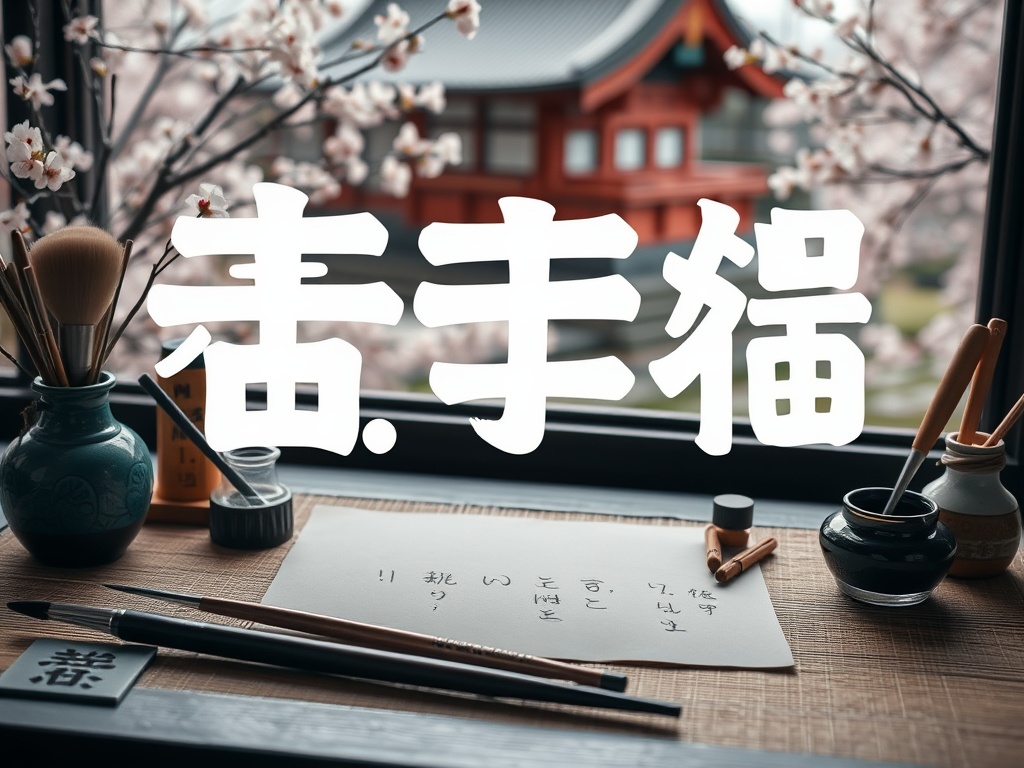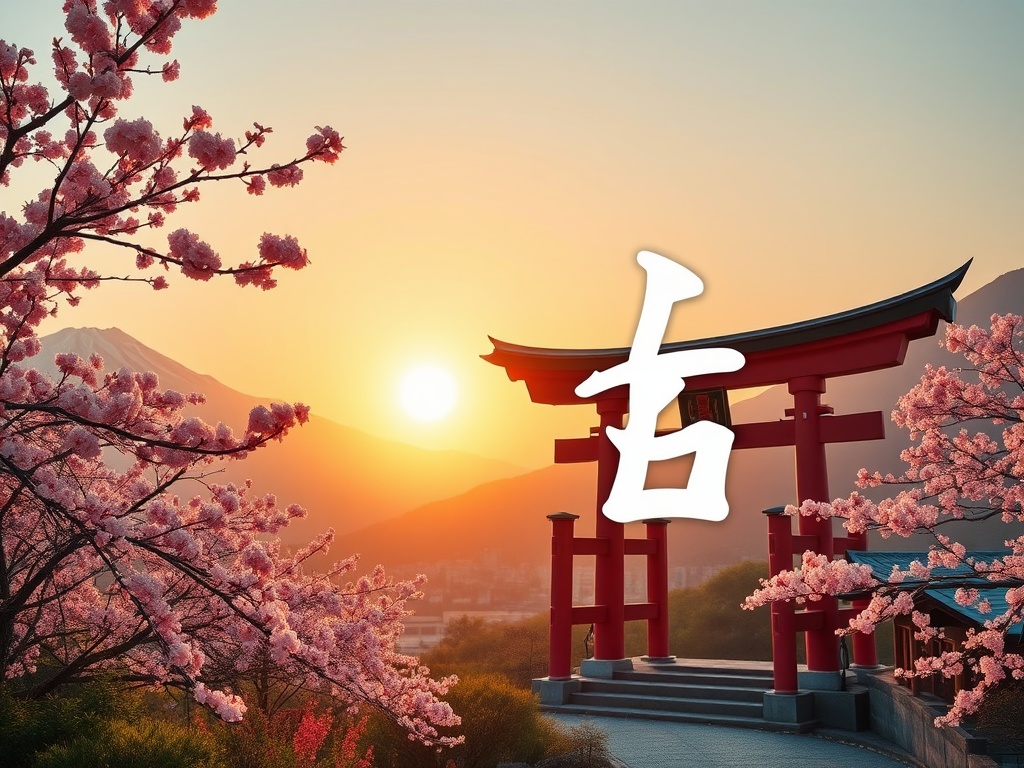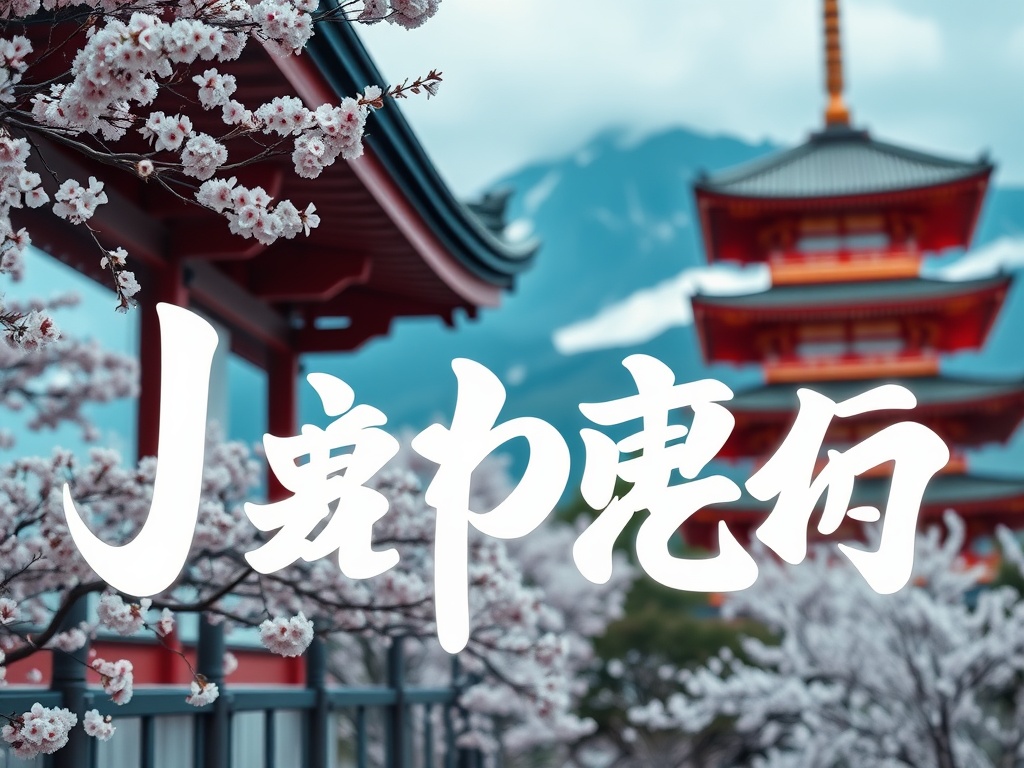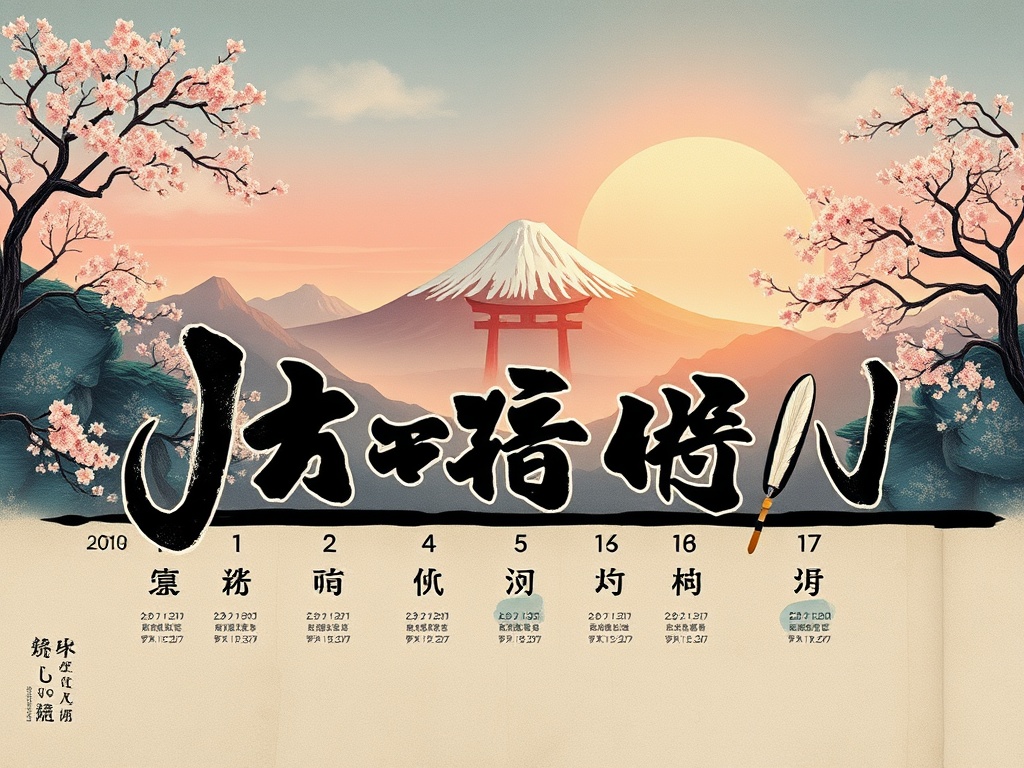Unraveling the Kanji: Discover the Symbols for ‘Japan’
Win a Free Trip to Japan!
Experience cherry blossoms and ancient temples
Japan, a country renowned for its rich history and vibrant culture, also boasts a fascinating writing system. At the heart of this system are Kanji characters, adopted from Chinese, each carrying deep meaning and history. Whether you’re a traveler eager to learn the basics or a culture enthusiast, understanding how to write ‘Japan’ in Japanese offers a glimpse into the intricate tapestry of the language.
In Japanese, ‘Japan’ is written using two Kanji characters: 日本. The first character, 日 (pronounced ni), means ‘sun’ or ‘day’, representing the rising sun. The second character, 本 (pronounced hon), means ‘origin’ or ‘base’. Thus, ‘Japan’ literally translates to ‘the origin of the sun’, earning its poetic nickname, ‘Land of the Rising Sun’.
Each Kanji character is composed of a series of strokes written in a specific order. Mastering these strokes is crucial not only for legibility but also for appreciating the art form that is Kanji. Here’s a quick guide to the strokes for 日本:
- 日 (Sun/Day): This character consists of four strokes. Start with a horizontal line, followed by a vertical line intersecting it, then two more lines to form the square.
- 本 (Origin/Base): This character has five strokes. Begin with a horizontal line, proceed with a vertical line down the middle, and then add the other lines to complete the character.
In Japan, Kanji is ubiquitous, seen in everything from street signs to restaurant menus. As a traveler, recognizing the Kanji for ‘Japan’ can enhance your cultural experience and provide a deeper appreciation for the local language. Practicing these characters can also serve as a unique souvenir, a skill that connects you to Japan’s rich linguistic heritage.
From Hiragana to Katakana: Writing ‘Japan’ in Different Scripts
Japan’s complex and beautiful writing system doesn’t stop at Kanji. Japanese is also written using two other scripts: Hiragana and Katakana. These scripts are phonetic, each representing specific sounds in the Japanese language. While Kanji provides meaning, these scripts give structure to the language. As a traveler, understanding these scripts opens a door to Japan’s linguistic world, making your journey more immersive and enjoyable.
Hiragana: The Soft Script
Hiragana is often described as soft and curvy, used primarily for native Japanese words and grammatical elements. When writing ‘Japan’ in Hiragana, it appears as にほん (pronounced ‘nihon’). Unlike Kanji, Hiragana characters are simpler and easier to memorize, making them ideal for beginners. Recognizing ‘にほん’ in text can be particularly useful when reading children’s books, restaurant menus, or casual signage. Learning Hiragana allows travelers to pick up basic phrases and interact more comfortably with locals.
Katakana: The Bold Script
Katakana, on the other hand, is known for its sharp and angular lines, often used for foreign words, proper nouns, and onomatopoeia. ‘Japan’ in Katakana is written as ニホン. This script is prevalent in contexts like international travel signs, menus featuring foreign cuisine, and names of companies or products. Recognizing ‘ニホン’ in these settings can enhance a traveler’s experience by helping them navigate through internationalized contexts and understand Japan’s global connections.
For those keen on delving deeper into the language, understanding the use of Hiragana and Katakana alongside Kanji provides a comprehensive view of how the Japanese language is structured and used in daily life. This knowledge not only enriches your travel experience but also offers a deeper appreciation of Japan’s cultural nuances.
A Journey Through Time: The Evolution of Japan’s Name in Writing
As you traverse the captivating landscapes of Japan, from its serene temples to bustling urban centers, understanding the evolution of the country’s name in writing adds an intriguing layer to your journey. This evolution not only reflects linguistic changes but also mirrors historical shifts that have shaped Japan’s identity. Whether you’re a history buff or a language lover, exploring how the name ‘Japan’ has been inscribed through the ages offers a fascinating glimpse into the country’s past and present.
In the earliest records, the land now known as Japan was referred to by the Chinese character 倭 (Wa). This character, used in ancient Chinese texts, described the people of the islands as the ‘Wa people’. The character 倭 was eventually replaced due to its derogatory connotations, marking the beginning of an intriguing evolution in the written representation of Japan.
During the 7th century, as Japan sought to assert its own identity distinct from China’s influence, a new name was adopted: 日本 (Nihon or Nippon). This name, literally meaning ‘origin of the sun’, was chosen to reflect Japan’s geographical position east of China, where the sun rises. This period marked a significant cultural transformation as Japan embraced the Chinese writing system, integrating Kanji characters into its language and adopting a name that resonated with national pride and identity.
While 日本 remains the official name in Japanese, internationally, the country is known as ‘Japan’. This name’s origin traces back to early European traders and travelers who adapted ‘Nihon’ to their own phonetic systems. The name ‘Japan’ became popularized through trade and exploration, establishing itself in global vocabulary. Today, whether you refer to it as Nihon, Nippon, or Japan, the name encapsulates a rich tapestry of cultural exchanges and historical evolution.
The evolution of Japan’s name is a testament to its dynamic history, showcasing a blend of indigenous culture and foreign influence. For travelers, understanding this progression enhances their appreciation of Japan’s linguistic heritage and deepens their connection to the country as they explore its many wonders.
Mastering the Art of Calligraphy: Crafting ‘Japan’ with Elegance
Embarking on a journey to Japan not only opens the door to its stunning landscapes and rich culture but also to the intricate beauty of Japanese calligraphy. Known as shodo, this art form is more than just writing; it is a meditative practice that transforms each stroke into a dance of precision and grace. For travelers and culture enthusiasts, learning how to craft the word ‘Japan’—日本 (Nihon)—in calligraphy offers a profound connection to the country’s artistic soul.
The ancient practice of shodo is deeply intertwined with Japanese culture, reflecting values of harmony, beauty, and discipline. As you learn calligraphy, you delve into a world where the flow of ink on paper captures the spirit of the language. Crafting the Kanji for ‘Japan’ requires not only understanding the strokes but also sensing the rhythm and balance inherent in each character. This practice invites you to slow down, appreciate the subtlety of each line, and embrace the art of mindful writing.
To experience the full depth of calligraphy, one must be equipped with the right tools. Essential items include a brush (fude), ink stick (sumi), an ink stone (suzuri), and calligraphy paper (hanshi). Each tool contributes to the overall experience, with the brush allowing for a fluid motion, the ink providing depth and intensity, and the paper offering a canvas for expression. Acquiring and using these tools transforms the writing of ‘Japan’ from a simple task to an immersive cultural ritual.
Creating the Kanji for ‘Japan’ in calligraphy is about more than technical skill; it is about capturing the essence of the characters. The way you hold the brush, manage your breath, and apply pressure all influence the outcome. Each stroke should be deliberate, reflecting the strength and elegance of the rising sun—an emblematic representation of Japan itself. This artistic journey not only enhances your appreciation for Japanese writing but also enriches your travel experience, allowing you to connect with the country’s cultural heritage in a meaningful way.
Decode the Language: Understanding the Meaning Behind ‘Nihon’
As you wander through the vibrant streets of Tokyo or the tranquil paths of Kyoto, understanding the true essence of the word ‘Nihon’ becomes a gateway to experiencing Japan on a deeper level. This term, used to refer to the island nation in its native tongue, is not just a name but a profound reflection of Japan’s unique cultural identity and its place in the world.
The Japanese name for Japan, 日本 (Nihon or Nippon), is a mirror of the country’s poetic identity—the Land of the Rising Sun. The character 日 (ni) signifies ‘sun’ or ‘day’, while 本 (hon) stands for ‘origin’ or ‘base’. Together, these characters encapsulate the notion of Japan as the place where the sun originates, a nod to its geographical position east of the Asian continent. For travelers, grasping this meaning enriches the appreciation of Japan’s historical narratives and cultural symbolism.
As you delve into the story behind ‘Nihon’, you begin to see how language and identity are intertwined. The name, chosen during a time of cultural assertion in the 7th century, reflects Japan’s desire to distinguish itself from its continental neighbors. This was not merely a linguistic decision but a cultural reawakening, echoing through the centuries as Japan forged its path on the global stage. Understanding these historical nuances allows travelers to connect more intimately with the sites and stories of Japan, from ancient shrines to modern skyscrapers.
The evolution of Nihon also highlights Japan’s adaptability and openness to external influences. While the name remained rooted in tradition, the country’s journey to being known as ‘Japan’ in the international community showcases its dynamic interaction with the world. This dual identity—local yet global, traditional yet modern—forms the vibrant tapestry that travelers experience in every corner of the country. As you explore Japan, let the story of 日本 guide you through its landscapes, offering a lens through which the past and present coalesce in a truly unique cultural adventure.
Cultural Insights: How Language Shapes the Identity of Japan
Diving into the language of Japan reveals more than just words and characters; it uncovers a cultural narrative that has been woven through history. As you explore this vibrant nation, understanding the linguistic nuances helps illuminate how language has helped shape Japan’s distinct identity. For travelers, this insight provides a richer connection to the places and people encountered along the way.
Japanese language is not merely a tool for communication; it is a vessel of culture and tradition. The characters used to write ‘Japan’, 日本 (Nihon), for instance, symbolize the ‘origin of the sun’, reflecting a deep-seated cultural imagery of Japan as the Land of the Rising Sun. Such symbolism is pervasive throughout the language, with Kanji characters often carrying layers of meaning that resonate with Japan’s historical narratives and philosophical concepts.
For those visiting Japan, recognizing these symbols in everyday life—from the serenity of a temple to the modern vibrancy of a cityscape—opens a window into the Japanese worldview. Language becomes a bridge across time, connecting ancient traditions with contemporary life.
The Japanese language serves as a conduit for cultural expression, influencing everything from social interactions to artistic endeavors. In Japan, language is imbued with a sense of respect and hierarchy, evident in the use of honorifics and formality levels in speech. This linguistic structure mirrors societal values, emphasizing harmony, respect, and community.
Travelers who grasp these linguistic subtleties often find themselves navigating social settings with greater ease, enriching their interactions and experiences. By learning even a few phrases, visitors can engage with locals in a meaningful way, fostering genuine connections and leaving a lasting impression.
For those ready to delve into the intricacies of Japanese, embarking on a linguistic journey offers more than mastery of a new language; it provides a deeper appreciation of Japan’s cultural fabric. Here are some linguistic aspects to explore:
- Kanji: Understand the complex characters and their historical connotations.
- Hiragana and Katakana: Learn these scripts to unlock phonetic nuances and enhance reading comprehension.
- Honorifics: Grasp the use of honorifics to navigate Japanese social etiquette.
- Expressions: Familiarize yourself with common expressions that capture the spirit of everyday life in Japan.
The journey through Japan’s language is a path to unlocking its cultural essence. As you write ‘Japan’ in its native form, you gain more than linguistic skill; you embrace a piece of the nation’s soul, enriching your travel experience with each stroke and syllable.



